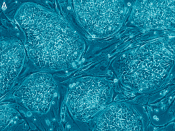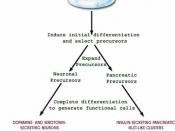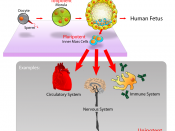Research on stem cells began in November of 1998 when researchers were successful in isolating the stem cells in a lab. At first a selected few scientists only realized the enormous potential of stem cell. Then, in the U.S. and other parts of the world stem cell funding and research went rampant. Australia made a huge stem cell breakthrough by discovering that stem cell are to generate themselves into other, specialized cells, in particular the types of cells which naturally fight disorders or replace damaged or diseased cells. Before this research it was not known if mature brain cells could do this too. "It's really taken us this last nine or ten years to be able to find out what the cell looks like, and having found, we can now look at the ways of being able to stimulate it into making new nerve cells with the possibility of replacing damaged or lost nerve cells in the adult brain"(Cohen, 2002, p.
1).
"President George W. Bush, Jr. spent much time debating with all types of people before making his decision on one the most controversial issues in our society which is stem cell research" (Kalb & Rosenberg, 2004, p. 1). The first step he took was becoming knowledgeable on stem cells. Stem cells are unspecialized cells that renew themselves for long periods of time through cell division. Researchers discovered stem cells in the tissues and organs of adults, human embryos, the newest, umbilical cords. The most promising research seems to exist with the human embryonic stem cells; however, the research is slowing down thanks to the ethical debates among Americans. Many people believe that the embryonic stem cells are obtained by killing a baby, but scientists believes that these cells have a potential for life.
With this knowledge,



Stem Cell issues
nice paper about the issue of Stem Cell with references
0 out of 0 people found this comment useful.